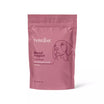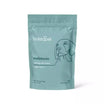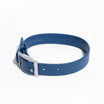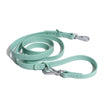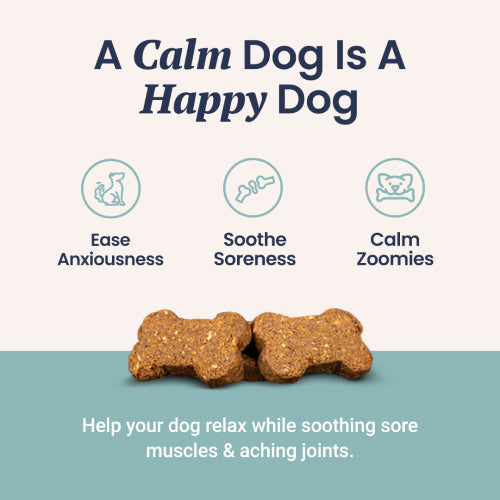Dog Breeds
Join Our Newsletter
![Boxer Dog Breed Temperament & Personality [Full Guide]](http://www.holistapet.com/cdn/shop/articles/boxer-breed.jpg?v=1686604669&width=820)
Boxer Dog Breed Temperament & Personality [Full Guide]
Boxers are impressive dogs with square jaws and naturally lean bodies. They are known to be loving, loyal, energetic, intelligent, and great with children. Their personalities gave way to their ri...

Lhasa Apso: Dog Breed Temperament, Personality, & FAQ Guide
The Lhasa Apso is a charming small dog hailing from Tibetan monasteries. This ancient breed is a wonderful pet that fits into nearly every lifestyle. Whether lounging around as a comforting lapdog...

German Spitz Dog Breed Temperament, Personality, & FAQ Guide
If you've ever spotted a canine at the dog park that doesn't quite look like a Pomeranian but also doesn't really resemble a Keeshond, it's probably a German Spitz! This rare breed is also known a...
![Italian Greyhound Dog Breed Temperament & Personality [Full Guide]](http://www.holistapet.com/cdn/shop/articles/italian-greyhound.jpg?v=1686603970&width=820)
Italian Greyhound Dog Breed Temperament & Personality [Full Guide]
Zoom-Zoom! That's the sound of an Italian Greyhound running around your yard. These track stars love to run and play just about any sport you care to teach them. Loving and intelligent, this dog b...

Labrador Retriever: Complete Breed Guide and History
There's no denying that the Labrador Retriever is one of the most popular dog breeds of all time. Labrador Retrievers have a history as working dogs since their coats and tail are designed specifi...

Dogo Argentino: Breed Information, Pictures, and More!
The Dogo Argentino turns heads. It's a powerful-looking dog breed that weighs about 100 pounds! It's muscular and strong, with a striking white coat. But once make this breed a part of your family...

Border Collie Dog Breed | Information & Facts
What has four paws, a high energy level, and a strong work ethic? You guessed it, the Border Collie! A popular pet nowadays, this beautiful canine was originally bred in Scotland as a working dog....

American Akita — Why You Should Adopt! Breed Pics & Characteristics
The American Akita is a unique dog breed that resembles a bear. They have an aloof and willful personality that makes for an excellent watchdog and powerful guard dog. Akitas have been guarding si...
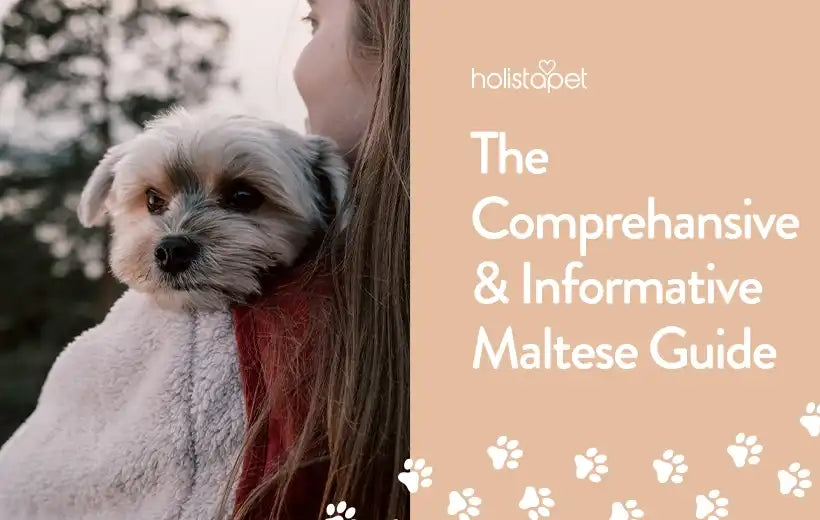
Maltese Dog Breed Information: Facts & Personality
If you're looking for a friendly dog with elegance and charm, look no further than the Maltese! With their silky, pure white coats and warm temperaments, it's no surprise that they've made popular ...
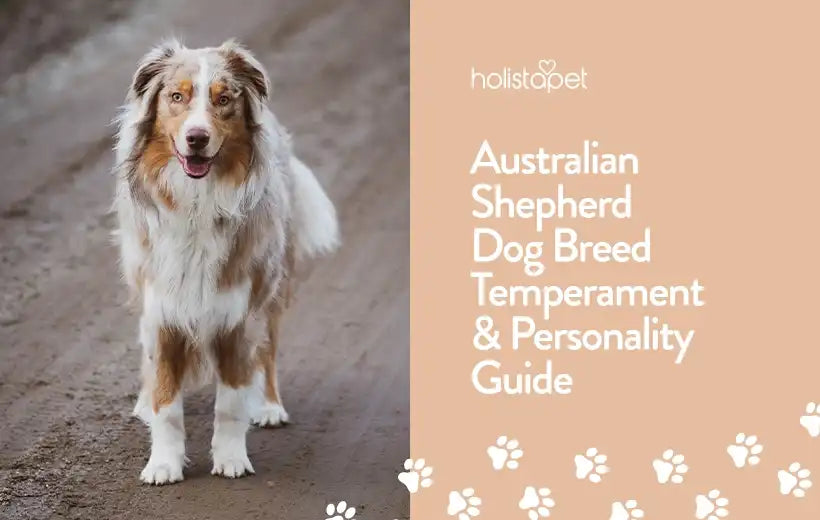
Australian Shepherd Dog Breed Information & Facts
Developed on American ranches, Australian Shepherds are hardworking and intelligent dogs that are happiest when given tasks and work to accomplish. Almost everyone has heard of Australian Shepherd...

Pug Dog Breed Information, Characteristics & Facts
When you see their big round eyes, goofy grin, and wrinkly face, it's hard to not fall in love with the Pug. Just look at that little curly tail, too! This strikingly adorable dog breed has a motto...

Basset Hound Dog Breed Information & Complete Guide
The Basset Hound is one of the most identifiable dog breeds in the world. Those long, droopy ears, sad brown eyes, stubby legs, and loud, low bark make them quite the character! They also have a l...

The Havanese Dog Breed: A Small Dog With A Big Personality
Whether this breed is clowning around, cuddling with you on the couch, or racing around the backyard, the Havanese is a loving and social dog that's the perfect fit for almost every family. The ...

Golden Retriever Dog Breed Information & Facts
Golden Retrievers are one of the most popular dog breeds across the nation. These Scottish dogs are loyal, friendly, and eager to please. Their name is a reflection of their coat, which ranges bet...
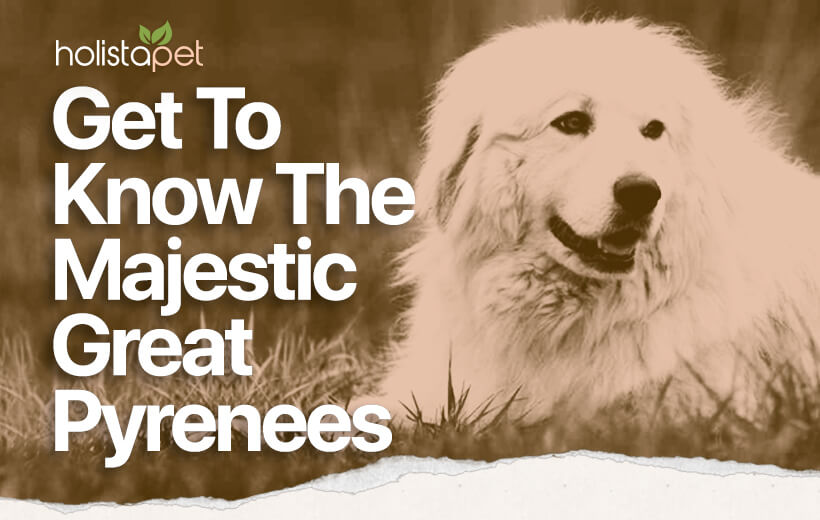
Great Pyrenees: Complete Dog Breed Guide For This Gentle Giant
When you think of a big dog breed which one comes to mind? If you picture a large, fluffy white dog the size of a bear, that's the Great Pyrenees! The Great Pyrenees is known for its immense size ...

English Setter: Breed Guide For the Incredibly Loyal, Big-Hearted Dog
Known for its intrinsic skill of "setting" when hunting for birds, the English Setter is a master of stealth and agility when out on the prowl. Although they are still used for hunting today, the ...

Toy Fox Terrier: An All American Dog Breed With Universal Appeal
The Toy Fox Terrier is a true all-American breed that will make you laugh with their rambunctious and bubbly personalities. Most Terriers are known for their ability to hunt small game, but the Toy...
![English Springer Spaniel [Get To Know This Lively & Sweet Dog Breed]](http://www.holistapet.com/cdn/shop/articles/english-springer-spaniel.jpg?v=1686611435&width=820)
English Springer Spaniel [Get To Know This Lively & Sweet Dog Breed]
Originally bred to be a gun dog for hunting, the English Springer Spaniel is an athletic and rather versatile breed that has evolved to become a loving companion.The English Springer Spaniel is a m...
![Coton de Tulear [Find Out What It Takes to Care For That Stunning Coat]](http://www.holistapet.com/cdn/shop/articles/coton-de-tulear.jpg?v=1686611328&width=820)
Coton de Tulear [Find Out What It Takes to Care For That Stunning Coat]
This cheerful dog breed has been known throughout history by many names: The Royal Dog of Madagascar, Cotone, Cotie. But the name that endures is Coton de Tulear (KO-Tone Dih TOO-Lay-ARE). Intelli...

German Pinscher: All About This Lively, Spirited Dog Breed
Originally from Germany, this dog breed is a medium-sized powerhouse of a canine with an elegant appearance and graceful personality. The German Pinscher is an all-around beautiful and intelligent...

Newfoundland Dog: All About This Giant, Lovable Breed
Who remembers the beloved Nana from Peter Pan? Come on, we know you do! She was the dog at the very beginning of the movie that pulled at everyone's heartstrings when she got chained to her doghou...

German Shepherd: Your Guide To An Iconic Breed
Gentle, fearless, protective. The stunning German Shepherd is one of the world's most popular and recognizable breeds. As a loyal and friendly dog breed, German Shepherds handle high-pressure work...

Toy Dog Breeds: 7 Popular Breeds Perfect For Your Home!
Although they are compact in size, toy dog breeds have huge personalities! This group consists of many small dog breeds known to be affectionate, friendly, and playful. With their small size, they...
![Miniature Schnauzer [Everything We Love About Them]](http://www.holistapet.com/cdn/shop/articles/miniature-schnauzer.jpg?v=1686610396&width=820)
Miniature Schnauzer [Everything We Love About Them]
The Miniature Schnauzer is a small dog with a big personality. While tiny, this bearded breed is known for its bravery, energy, and intelligence. Able to learn almost any trick and ready for almos...

Australian Cattle Dog: Top Breed Facts & Care Guide
The Australian Cattle Dog has one of the most unique looks of any dog breed in the world. They have striking spotted fur that's a stunning shade of blue. This has earned them the nickname Blue Hee...
![12 Healthiest Dog Breed With Least Health Problems [2022]](http://www.holistapet.com/cdn/shop/articles/healthiest-dog-breed.jpg?v=1686609525&width=820)
12 Healthiest Dog Breed With Least Health Problems [2022]
We all know the saying that "dogs are man’s best friend”. While this is certainly true, it could also be said that they are, “Man’s oldest friend”. All dogs originate from a genetic lineage of Gra...
![Best Service Dog Breeds For Anxiety [2022]](http://www.holistapet.com/cdn/shop/articles/service-dog-breeds-for-anxiety.jpg?v=1686608972&width=820)
Best Service Dog Breeds For Anxiety [2022]
We all crave the love and attention of dogs just like they crave ours. But sometimes it is more than just a craving–sometimes it is a need for therapeutic purposes, such as managing anxiety. Servic...

American Bulldog Breed Information
The American Bulldog is part watchdog, part lap dog, part gentle giant. Although they look like they can barrel through a concrete wall, American Bulldogs are one of the most affectionate family d...
![Irish Terrier [Full Breed Guide - History, Personality, & Care]](http://www.holistapet.com/cdn/shop/articles/irish-terrier.jpg?v=1686677868&width=820)
Irish Terrier [Full Breed Guide - History, Personality, & Care]
Out of the thirty-four Terrier dog breeds, one of the oldest Terrier breeds in the world is the Irish Terrier. Though they all share feisty and energetic attitudes, the Irish Terrier is a strong-w...
![Poodle Dog Breed Guide [How to Care For These Smart Pups]](http://www.holistapet.com/cdn/shop/articles/poodle.jpg?v=1686677363&width=820)
Poodle Dog Breed Guide [How to Care For These Smart Pups]
If you think Poodles are only snooty frou-frou balls of cotton, you would be sorely mistaken! Poodles have a proud history that ranges from hunting to circus performing to fashion accessories, mak...
![Bloodhound Dog Breed Temperament & Personality [Full Guide]](http://www.holistapet.com/cdn/shop/articles/bloodhound-dog.jpg?v=1686677095&width=820)
Bloodhound Dog Breed Temperament & Personality [Full Guide]
Bloodhound dogs are musty, drool a lot, and can be very stubborn at times, but they are a very affectionate and proud breed. Famed for their keen sense of smell, their noses can often lead them in...
![Irish Setter Dog Breed Temperament & Personality [Full Guide]](http://www.holistapet.com/cdn/shop/articles/irish-setter.jpg?v=1686677028&width=820)
Irish Setter Dog Breed Temperament & Personality [Full Guide]
Nothing says beautiful, smart, and energetic like the Irish Setter. Raised initially to be a bird-hunting dog, their fun and loving personality makes them perfect for families. Irish Setters are k...
![Dachshund Breed Guide [All About the Lively Wiener Dog]](http://www.holistapet.com/cdn/shop/articles/dachshund.jpg?v=1686676946&width=820)
Dachshund Breed Guide [All About the Lively Wiener Dog]
The Wiener Dog. The Doxy. The Hot Dog. The Sausage Dog. Yes, we're talking about the Dachshund! This breed has earned an abundance of nicknames due to its long body and short legs. But the Doxie i...

Bull Terrier: All About This Unique & Charming Dog
There are few things that Target doesn't carry, and that includes the Bull Terrier. Although you'll recognize this breed as the face of Target, we hope that you're responsible enough to purchase f...
![Norwegian Elkhound Dog Breed Temperament & Personality [Full Guide]](http://www.holistapet.com/cdn/shop/articles/norwegian-elkhound.jpg?v=1686676761&width=820)
Norwegian Elkhound Dog Breed Temperament & Personality [Full Guide]
Historically known for their keen ability to hunt moose, Norwegian Elkhounds are not as ferocious as their reputation or name might suggest. Rather, this active and playful dog breed prides itself ...
![Beauceron [Full Breed Guide: Complete History, Personality, & Care Tips]](http://www.holistapet.com/cdn/shop/articles/beauceron.jpg?v=1686676314&width=820)
Beauceron [Full Breed Guide: Complete History, Personality, & Care Tips]
Fiercely loyal, watchful, driven, and energetic are some words one would use to describe the acclaimed French herding dog known by name as the Beauceron. This intelligent canine breed will be a hap...

Yorkshire Terrier: A Small Dog Breed With Tons Of Charm
When people think of the Yorkshire Terrier, their long, tan, black coat is often the first thing to mind. And they have that adorable ponytail on their head. People also think of the breed's size....
![Cavalier King Charles Spaniel [Complete Guide To This Amazing Breed!]](http://www.holistapet.com/cdn/shop/articles/cavalier-king-charles-spaniel.jpg?v=1686611578&width=820)
Cavalier King Charles Spaniel [Complete Guide To This Amazing Breed!]
The Cavalier King Charles Spaniel is a natural companion dog with a bit of sporty nature. As much as they love to lounge around and cuddle up next to you on the couch, they also enjoy chasing afte...

Portuguese Water Dog: Energetic, Intelligent, Loyal
All dogs can perform amazing tricks, but few do it as naturally as the Portuguese Water Dog. Millions of people enjoy having dogs as pets thanks to their ability to provide companionship and plenty...
![Alaskan Husky Dog Breed Temperament & Personality [Full Guide]](http://www.holistapet.com/cdn/shop/articles/alaskan-husky.jpg?v=1686681499&width=820)
Alaskan Husky Dog Breed Temperament & Personality [Full Guide]
Sled dog or family pet? The Alaskan Husky plays both parts with a liveliness that few other breeds can match. Endless energy, unrestrained howls, and a compulsive desire for cuddling give this can...

The Tibetan Terrier: A Guide To A Dog Breed That's Ready For Everything
Are you feeling down on your luck and in need of a friend who can help turn your fortunes around? The Tibetan Terrier is the perfect companion who will bring a big smile to your face and fill your...

Australian Kelpie: All About This Intelligent & Energetic Dog Breed
The Australian Kelpie is the definition of a hard-working dog and the perfect companion for a very active person. This dog is independent and capable of completing everyday tasks while also having...
![Herding Dogs [The Most Popular Herding Breeds + Complete List]](http://www.holistapet.com/cdn/shop/articles/herding-dogs.jpg?v=1686680996&width=820)
Herding Dogs [The Most Popular Herding Breeds + Complete List]
Herding dogs are some of the most devoted and hard-working breeds in the world, with their innate sense of leadership and courage. Herding dog breeds have an extensive history of working on farms, ...
![The Great Dane [A Complete Guide To This Epic Dog Breed]](http://www.holistapet.com/cdn/shop/articles/great-dane.jpg?v=1686680889&width=820)
The Great Dane [A Complete Guide To This Epic Dog Breed]
Not every dog is born great. They have to earn it. Well, the Great Dane is a bit different. This breed has the word "great" in its name. The instantly recognizable Great Dane breed is known for it...
![Irish Wolfhound [Get To Know This Sweet-Tempered Historic Dog Breed]](http://www.holistapet.com/cdn/shop/articles/irish-wolfhound.jpg?v=1686680799&width=820)
Irish Wolfhound [Get To Know This Sweet-Tempered Historic Dog Breed]
The Irish Wolfhound is the tallest canine and possibly the breed with the biggest heart of all dog breeds. This dog's size may be imposing, but its giant size is due to how much love and affection...

Your Guide To The Wrinkly Chinese Shar-Pei Dog Breed
The Chinese Shar-Pei is a captivating wonder of the canine world. This is no ordinary dog breed — everything from their appearance to their temperament is bred for boldness and purpose. With origi...

Keeshond: Breed Guide to the Delightful Bundle of Energy
The Keeshond (kayz-hawnd, plural: Keeshonden) is highly regarded among dog owners for its friendly, inviting nature. They are a happy, loyal, non-sporting breed. Due to their history as guards and...

Cane Corso: Your Guide To A Burly, Beautiful Beast
Developed as a guard dog and a hunter of big game-like wild boar, the Cane Corso is a magnificent breed that is much more than its exquisite personality and strong physique. The Cane Corso is a ...
![Pekingese Dog Breed Temperament & Personality [Full Guide]](http://www.holistapet.com/cdn/shop/articles/pekingese.jpg?v=1686678510&width=820)
Pekingese Dog Breed Temperament & Personality [Full Guide]
Born from a royal background, the Pekingese is a regal, dignified, and stubborn breed. Their rich history reaches back to the Tang Dynasty in ancient China. Although they are beautiful and noble, ...
![Manchester Terrier Dog Breed Temperament & Personality [Full Guide]](http://www.holistapet.com/cdn/shop/articles/manchester-terrier.jpg?v=1686677733&width=820)
Manchester Terrier Dog Breed Temperament & Personality [Full Guide]
Small and feisty, intelligent and loyal, the Manchester Terrier is a little ball of energy that will never fail to keep you entertained. Their spunky temperament can make them stubborn, and thorou...

Sporting Dogs: A Definitive Guide To Energetic, Athletic Breeds
Sporting dogs are bred and raised to perform hunting-related tasks for their human companions. However, not all sporting dogs are created equal, as some are bred for tasks that others simply can't...

The American Bully: A Big Dog With A Bigger Heart
When it comes to being an outstanding companion, no person or animal can compete with the American Bully. A true companion dog, the American Bully, is everything you would want in a pet. Are you...
![Wirehaired Pointing Griffon [Full Dog Breed Guide]](http://www.holistapet.com/cdn/shop/articles/wirehaired-pointing-griffon.jpg?v=1686683336&width=820)
Wirehaired Pointing Griffon [Full Dog Breed Guide]
The Wirehaired Pointing Griffon is a charismatic and energetic breed from the sporting dog group. They're known as the "supreme gundog" because of their background and success in hunting down water...

Cardigan Welsh Corgi: Companion Guide to the Long Adored Breed
In Wales, a little fairy tale land studded with mysterious standing stones and misty mountains, the faeries mount and ride little long-backed dogs, eternally chasing the wild hunt across a starlit ...

Cutest Dog Breeds: A List of Absolutely Adorable Pups
Discovering the cutest dog breeds may be the best part of welcoming a new pup into your home. You get to surf the internet, browsing potential puppies that may become a long-lasting addition to yo...
![West Highland White Terrier [Complete Dog Breed Guide]](http://www.holistapet.com/cdn/shop/articles/west-highland-white-terrier.jpg?v=1686681964&width=820)
West Highland White Terrier [Complete Dog Breed Guide]
Although small and nonthreatening looking, the West Highland White Terrier is a breed that packs plenty of personality in a tiny package! Originally from Scotland, West Highland White Terriers are...
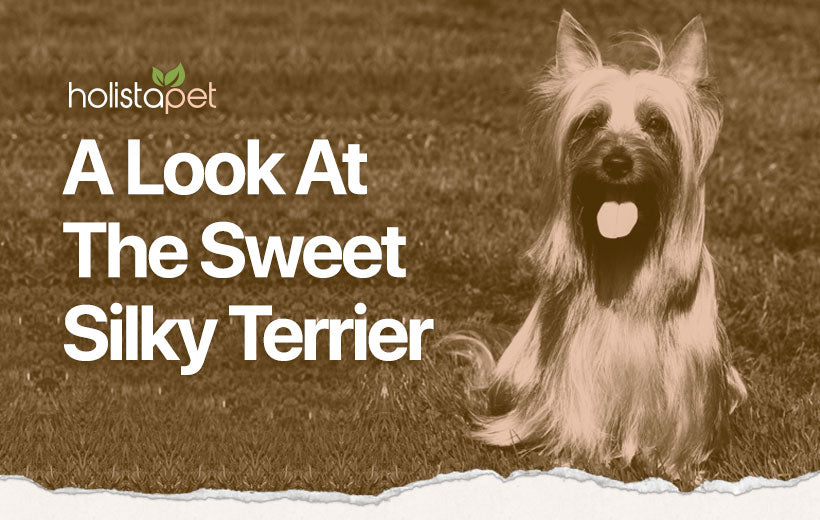
The Silky Terrier Dog Breed: A Guide To A Tiny But Mighty Dog
Because of its long, thin hair, the Silky Terrier is often seen with a trendy ponytail of sorts atop its head — It's definitely an elegant-looking dog. But make no mistake, this breed is a ball of...

Chow Chow: Get To Know the Royal Teddy Bear of Dogs
Do you want a companion who is always by your side? Are you looking to include a new member to your family who can keep you and your kids entertained? Well, look no further than the Chow Chow dog ...
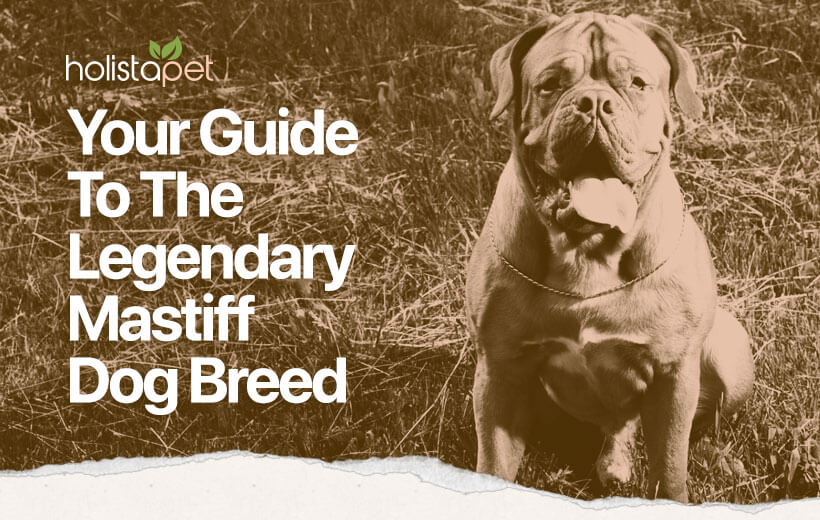
Mastiff Dog Breeds: A Breed That's Large And In Charge
The Mastiff - they're large, lovable, loyal, and just all-around impressive dogs. They're typically seen as intimidating guard dogs (which they certainly can be), but they are so much more! Many m...

Hound Dog Breeds: All About This Talented Group of Canines
One of the most extraordinary and talented groups of dogs is the Hound Dog breed. Consisting of a wide range of specific breeds such as Norwegian Elkhounds, Beagles, and Basset Hounds, the Hound D...
![Airedale Terrier Dog Breed [Complete Breed Guide]](http://www.holistapet.com/cdn/shop/articles/airedale-terrier.jpg?v=1686681562&width=820)
Airedale Terrier Dog Breed [Complete Breed Guide]
If it's not a Lakeland Terrier or a Welsh Terrier, it has to be an Airedale! The Airedale Terrier is an incredibly friendly and intelligent dog breed. These talented Terriers have performed many j...

American Foxhound: Complete Breed Information
Are you always on the go? Do you have children who like to run around all day? Wouldn't it be great if you had a companion to join you on your walks or keep up with your kids? There is not any gre...

Jack Russell Terrier: The Spirited Breed That Loves To Play Games!
If you are looking for a pup with a high amount of energy, petite size, extreme loyalty, and plenty of personality, the Jack Russell Terrier is the dog for you. A popular choice in countless telev...

Shih Tzu Complete Dog Breed Guide: Lively, Beautiful, and Loyal
A Shih Tzu's only job in life is to sit there and look pretty. Shih Tzu puppies are extremely adorable and one of the most playful breeds you can own. They are great for people living in small spa...

Saint Bernard Full Dog Breed Guide: Big, Friendly, and Brave
Originating from the mountains of Switzerland as a guard dog of a hospice center, Saint Bernards are now known as a giant and adored pet with plenty of love to give. Saint Bernards are large in ...

Whippet Dog: Complete Breed Guide (History, Personality, Care, & Health)
They say there is a dog out there for everyone. If you're someone who wants an affectionate furry friend that enjoys walks and doesn't bark up a storm, then the Whippet dog may be the perfect compa...
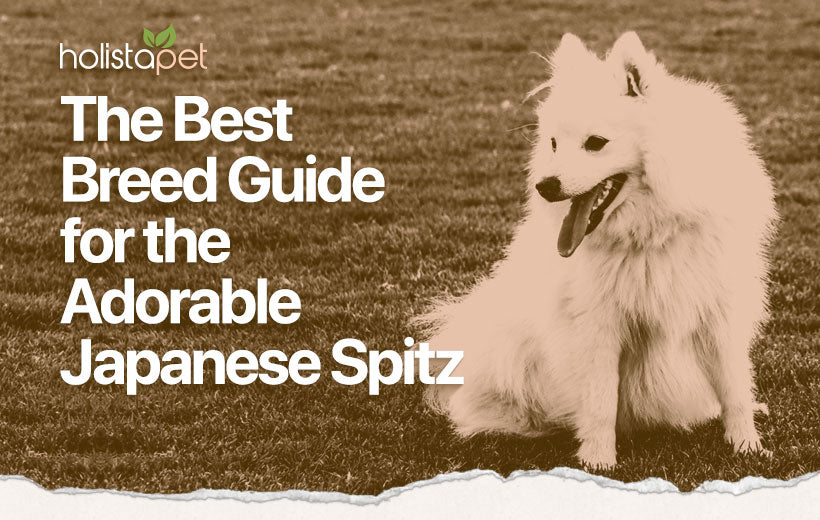
Japanese Spitz Dog Breed Guide: Get To Know This Rare, Fluffy Pooch
The Japanese Spitz packs quite a punch in a small package. This rare pooch breed has a furry white coat, undying loyalty, and a contagious smile. Originating from Japan, Japanese Spitz dogs are wo...
![Black Russian Terrier [A Full Breed Guide - History, Personality, & Care]](http://www.holistapet.com/cdn/shop/articles/black-russian-terrier.jpg?v=1686683843&width=820)
Black Russian Terrier [A Full Breed Guide - History, Personality, & Care]
There is no denying how lovable and amazing dogs are. These furry companions can bring us happiness and laughter while also providing protection and loyalty. Any breed is capable of achieving this...
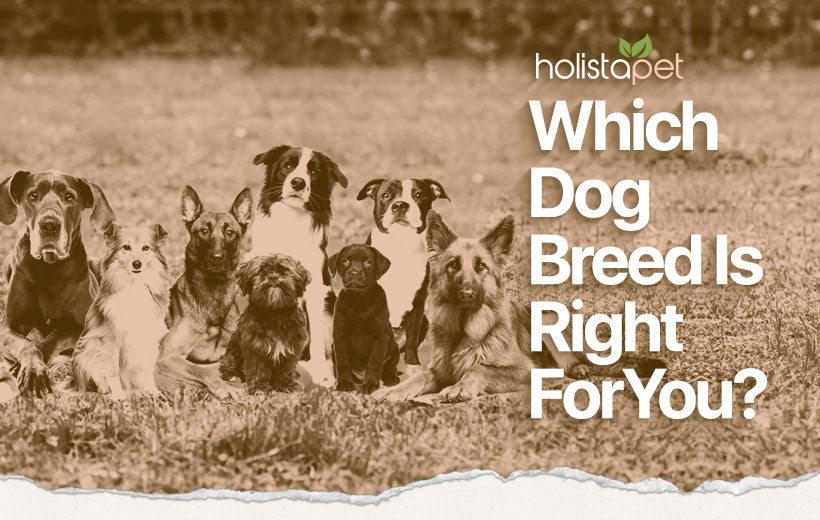
Dog Breed Groups: What Job Was Your Dog Bred To Do?
Dogs come in all shapes and sizes. Some are large with short hair, others are small with long hair. Then they’re those with curly tails and those with no tail at all. Different dog breed groups sh...
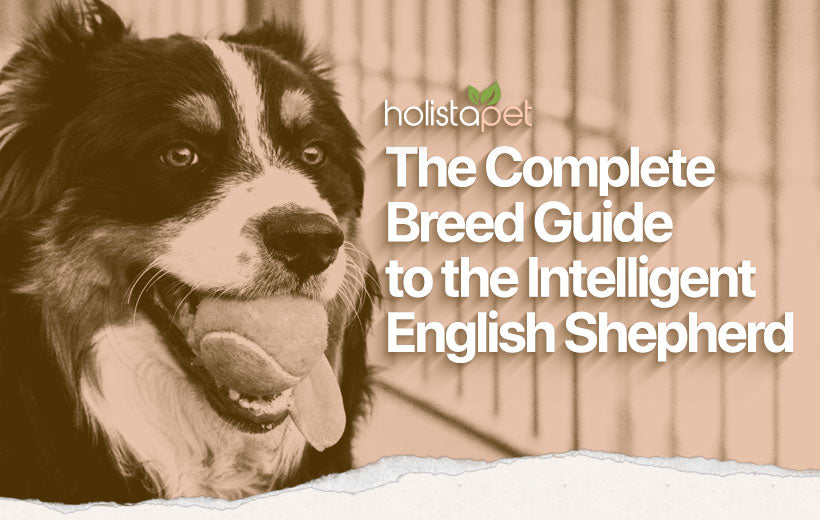
English Shepherd Dog Breed Guide: Get To Know This Versatile Canine
Looking for a dog that gets the job done? Look no further than the all-purpose English Shepherd! Whether it's herding livestock, competing in agility events, or even search and rescue missions, th...

Dutch Shepherd Dog Breed Guide: Rare, Talented, and Loyal
Dutch Shepherds are the rarer cousins of German Shepherds, and they have the same lively personalities and all-around versatility. You can find this amazing breed competing in events, working as p...
![English Pointer: Guide to the Top Game Hunter [Personality, Care, & More]](http://www.holistapet.com/cdn/shop/articles/english-pointer.jpg?v=1686685177&width=820)
English Pointer: Guide to the Top Game Hunter [Personality, Care, & More]
When people first see the English Pointer, they immediately think of hunting. The English Pointer is known for "pointing." No, they don't have fingers to point rudely at you. When a dog "points," ...

Bullmastiff Dog Breed: Big Facts About One of the Largest Canines
The Bullmastiff is a large, powerfully built hound that appears intimidating but is actually a goofball. They're mellow, easy-going dogs who make the perfect addition to any family, especially tho...
![Rat Terrier Dog Breed Temperament & Personality [Full Guide]](http://www.holistapet.com/cdn/shop/articles/rat-terrier.jpg?v=1686685009&width=820)
Rat Terrier Dog Breed Temperament & Personality [Full Guide]
Ever seen a Rat Terrier in action? They're incredible to behold. These little dogs take off at the speed of light with razor-sharp focus and burrow into the ground before you can even call their n...
![Large Dog Breeds [You'll Never Guess Which One's Biggest!]](http://www.holistapet.com/cdn/shop/articles/large-dog-breeds.jpg?v=1686684948&width=820)
Large Dog Breeds [You'll Never Guess Which One's Biggest!]
There's plenty more to love with large dog breeds, and their gentle temperaments make them great for children of all ages. Larger breeds like the Mastiff or Golden Retriever are typically easier t...

Small Dog Breeds 101: An Enormous Guide About Bite Sized Pups
Whether you're looking for a rambunctious and lively dog or a quiet and calm pup, small dog breeds might be suitable for your living situation and lifestyle. When it comes to small dog breeds, the...
![Bouvier des Flandres: Complete Breed Information [Pictures & More!]](http://www.holistapet.com/cdn/shop/articles/bouvier-des-flandres.jpg?v=1686684762&width=820)
Bouvier des Flandres: Complete Breed Information [Pictures & More!]
Imagine you are a young calf roaming the countryside of Belgium, wandering a bit too far off the path. You begin to worry because you do not recognize your surroundings, and the rest of the herd i...
![Chinese Crested Dog: A Bizarre Beauty [Complete Breed Information]](http://www.holistapet.com/cdn/shop/articles/chinese-crested-dog-breed.jpg?v=1686684673&width=820)
Chinese Crested Dog: A Bizarre Beauty [Complete Breed Information]
The spotted and hairless Chinese Crested is often listed as one of the ugliest dog breeds in the world. But what some people think is ugly, others think is completely adorable, unique, and cute. T...
![Shetland Sheepdog: The Lovable Scottish Shepherd [Breed Information]](http://www.holistapet.com/cdn/shop/articles/shetland-sheepdog.jpg?v=1686684597&width=820)
Shetland Sheepdog: The Lovable Scottish Shepherd [Breed Information]
Originating from the Shetland Islands in Scotland, the Shetland Sheepdog, is an incredible breed. Also known as a Sheltie, this adorable dog possesses many talents and a lovable personality. With...

Boston Terrier: Complete Breed Guide & Everything You Need To Know!
Are you in need of a companion or want to make a great addition to your family? The Boston Terrier is the perfect dog for you. No other dog exemplifies "man's best friend" better than the Boston T...

Chesapeake Bay Retriever: Complete Breed Guide!
When people hear retriever, they might think of the Labrador Retriever or the Golden Retriever. However, another retriever breed is quickly growing in popularity around the world - the Chesapeake ...

Border Terrier: Breed Guide For the Little Dog With Big Personality
The agile and upbeat Border Terrier has many admirers that cherish the breed's reputation as a tough and hard-working hound. These spirited, affectionate, and happy dogs are popular pets whether y...

Japanese Chin: Top Dog Breed Temperament & Personality Guide
The Japanese Chin, also known as the Japanese Spaniel, is a charming toy breed with an aristocratic background. These dogs are perfect indoor companions. They like to explore and climb, but Chins e...

Brussels Griffon: #1 Dog Breed Temperament & Personality Guide
Ever seen a dog with a beard? Allow me to introduce the Brussels Griffon! This adorable toy breed is brimming with personality, and their Wookie charm sweeps people off their feet. Hailing from Be...

Welsh Terrier Dog Breed: Temperament, Personality, & FAQs Explained
The Welsh Terrier is usually the life of the party. They are energetic dogs that love to hunt down vermin, play with other dogs, and run around with the family. Rumored to be the United Kingdom's ...

Greyhound Dog Breed: #1 Temperament & Personality Guide?
Need a dog that lounges on the couch with you all day? Or do you want a dog that loves running around outside and going on jogs with you? How about a dog that does both! The Greyhound dog is the p...
![Miniature Pinscher Dog Breed Temperament & Personality [Full Guide]](http://www.holistapet.com/cdn/shop/articles/miniature-pinscher.jpg?v=1686685578&width=820)
Miniature Pinscher Dog Breed Temperament & Personality [Full Guide]
Known as the "King of Toys," the Miniature Pinscher dog breed is a little canine with a whole lot of personality. This little dog trots like it owns the block, jumps into action at a moment's noti...
![Papillon: Your Guide the Pup of Royalty [Temperament, Care, & More]](http://www.holistapet.com/cdn/shop/articles/papillon.jpg?v=1686685493&width=820)
Papillon: Your Guide the Pup of Royalty [Temperament, Care, & More]
The beautiful Papillon dog has been a treasured breed throughout history. From their popularity in royal courts to the attention they received from historical figures like King Louis XIV and Marie...

The Terrier Breeds: Get To Know These Brave & Energetic Dogs
Most Terrier breeds are known for their big personalities, from the respectful but secretly mischievous Boston Terrier to the bossy and spirited Yorkshire Terrier. These are high-energy, independe...

Most Expensive Dog Breeds: The Top 10 Priciest Pups
The most expensive dog breeds in the world can cost thousands of dollars (and even millions), but what makes them so highly priced and valuable to own? The most expensive dog breeds didn't start...
![How To Help A Dog With Separation Anxiety [ Unlimited Guided ]](http://www.holistapet.com/cdn/shop/articles/help-a-dog-with-separation-anxiety.jpg?v=1686847388&width=820)
How To Help A Dog With Separation Anxiety [ Unlimited Guided ]
Whether you have a dog or puppy with separation anxiety the symptoms will be similar, but the behavior may be an effect of different reasons. As many pet owners know, separation anxiety is very com...











